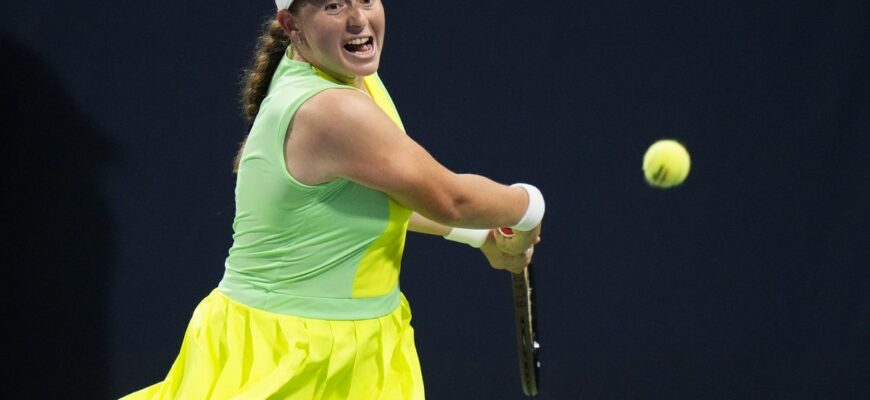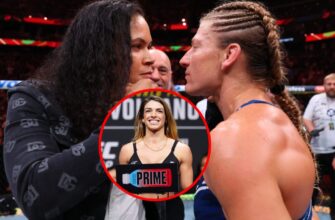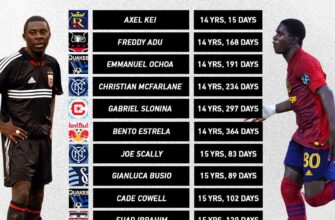The stadium court at the Credit One Charleston Open was set for an unexpected doubles debut on Monday after three quick singles matches.
It wasn`t just any impromptu pairing; it featured Erin Routliffe, ranked No. 3 and WTA Finals doubles champion with Gabriela Dabrowski, and Jelena Ostapenko, ranked No. 4 and US Open doubles champion with Lyudmyla Kichenok.
Despite being a new team, they found their rhythm and defeated Viktoriya Tomova and Katie Volynets 2-6, 6-3, 10-2. As the top seeds, they advanced to the quarterfinals.
“A few days before the tournament, Erin asked if I wanted to play,” Ostapenko said. “I wasn’t planning to play doubles here, but I thought, ‘Why not? She’s an excellent doubles player.’”
“Yes, it was a lot of fun.”
Ostapenko`s history in Charleston dates back to 2017 when, as a teenager, she reached the final. Two months later, she surprisingly won Roland Garros. She returned in 2019, but the stretch of tournaments in Indian Wells, Miami, and Charleston felt too long to be away from Latvia.
“I didn’t want to stay for so long just to wait for this tournament,” Ostapenko explained. “But then I had a good opportunity to practice on green clay in Miami, so I decided to come here.”
Seeded No. 11, Ostapenko will face the winner of the match between Louisa Chirico and Erika Andreeva. If she wins, a potential third-round match against defending champion Danielle Collins awaits.
Ostapenko has shown remarkable consistency, maintaining a Top 20 ranking for the past three years. Currently ranked No. 25, her best result this year was reaching the final in Doha, where she defeated No. 2 Iga Swiatek and No. 4 Jasmine Paolini.
Why does she perform well in Doha?
“I think it’s just the place,” Ostapenko laughed. “Maybe because it’s where things started for me. My biggest final before my Grand Slam was in Doha in 2016. I just enjoy playing in the Middle East.”
Playing doubles with Routliffe, Ostapenko’s characteristic expressions and gestures were on full display. Her intense focus during serves and visible frustration with missed forehands are part of why “Penko” has gained a global fanbase.
“The thing about me is that I’m extremely competitive, whether it’s tennis or anything else,” Ostapenko stated. “And sometimes I get very emotional on court. I get upset when I miss shots.”
Her goal for this year is to maintain her consistency and break back into the Top 10, a position she held for 10 weeks last year after a successful Middle East swing.
“Of course, in the coming years,” she added, “the goal is to win another Grand Slam.”
Only 16 active players can claim to have won “another” Grand Slam. Since Serena Williams` 23rd major win at the 2017 Australian Open, there have been 14 different Grand Slam singles champions. Ten of them, like Ostapenko, have one title.
Does Ostapenko have a greater appreciation for her Roland Garros victory now, seven years later?
“That’s a good question,” she paused. “I think I’ve always appreciated it. I’ve always believed in myself. I knew I could win a Grand Slam, but I honestly didn’t expect to win one at 19, turning 20. Maybe it was a bit early for me.”
“I think if I had won it later in my career, I would have handled it better – because winning a Grand Slam completely changes your life. Today, players who win Grand Slams are generally older than before.”
The success of Jessica Pegula, Danielle Collins, and Madison Keys – all competing in Charleston and over 30 – inspires her.
“I feel like the field is more open now,” Ostapenko said. “There are more opportunities for players to win Grand Slams. Anything is possible.”






